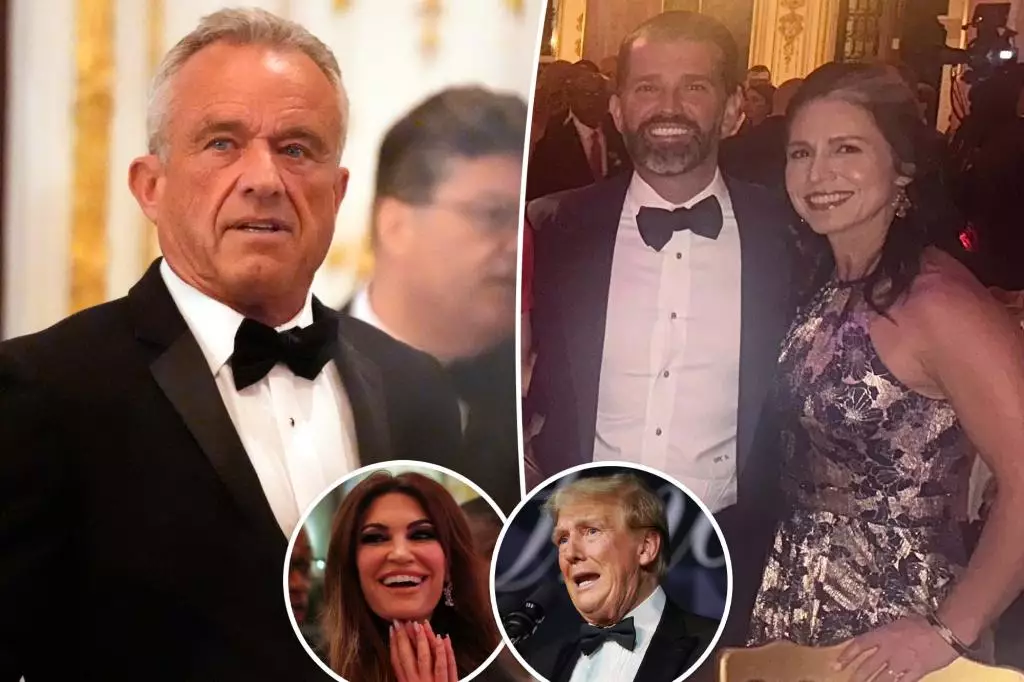In a notable convergence of political figures and celebrity culture, two of Donald Trump’s cabinet picks were recently seen enjoying a lavish evening at Mar-a-Lago. Robert F. Kennedy Jr., selected as the prospective Secretary of Health and Human Services, and former Congresswoman Tulsi Gabbard, who transitioned from the Democratic Party to a Republican affiliation, were among the distinguished guests celebrating at the Palm Beach gala. Accompanied by notable figures such as Kennedy’s wife, Cheryl Hines, Donald Trump Jr., and media personality Tucker Carlson, the event marked not only a social gathering but a significant moment in Trump’s political narrative.
This gathering comes during a critical transition period, as Trump establishes his cabinet in preparation for the upcoming term. The presence of key figures like Matt Gaetz, Trump’s nominee for Attorney General, further highlights the consolidation of support within Trump’s inner circle. The selection of individuals with a diverse political background, such as Gabbard, indicates Trump’s strategy to broaden his appeal to a wider electorate, potentially alienating some traditional Republican voters while attracting those disillusioned with the current political landscape.
The evening took an interesting turn when actor Sylvester Stallone introduced Trump, labeling him as a “second George Washington.” Such accolades from Hollywood not only elevate Trump’s status within certain circles but also intertwine celebrity with politics in a way that continues to shape public perception. Stallone’s remarks suggest a deeper narrative that portrays Trump as a transformative figure, reminiscent of the nation’s founding fathers. However, one has to ponder the implications of such comparisons—do they lend legitimacy to Trump’s policies and approaches, or do they trivialize the complexities of governance?
Stallone’s comments could be interpreted as divisive; while they may evoke admiration among Trump supporters, critics may view them as hyperbolic and disconnected from the realities faced by average citizens. The use of grandiose language like “mythical character” calls into question the validity of idolization in political discourse. It raises concerns about a possible narrative that overlooks policy details in favor of personality worship.
The gala was not merely a political assembly but a high-profile socialite event characterized by glitter and glamour. The camaraderie displayed among attendees, including the smiling faces of Don Jr. and his fiancée Kimberly Guilfoyle, painted a picture of unity within Trump’s circle. Guests such as Abraham Williams, Gabbard’s husband, and Ala Amaryllis Fox Kennedy, Robert F. Kennedy Jr.’s daughter-in-law, further enrich this tableau, illustrating the intricate web of relationships that intertwine personal and political spheres.
While the menu remains undisclosed, one can only speculate whether the culinary offerings met the approval of health advocate Kennedy. In an era where food choices often echo political beliefs, the dinner served could symbolize broader themes of health and wellness, exemplifying the priorities of the proposed health secretary.
As Trump hinted at unveiling more cabinet nominations, anticipation builds regarding the next phase of his administration’s direction. The mélange of celebratory events with serious political undertones reflects an administration poised to leverage celebrity influence alongside ideological shifts. This contrast between festivity and governance, as seen at the Mar-a-Lago gala, encapsulates the unique interplay of culture and politics that shapes contemporary America, leaving many to wonder what lies ahead for Trump and his storied legacy.

